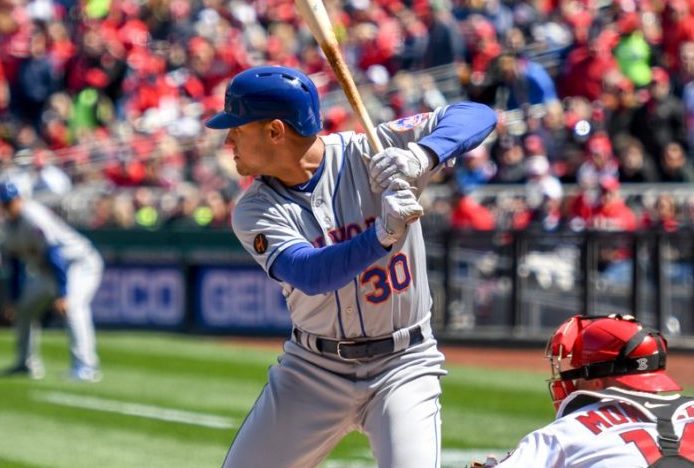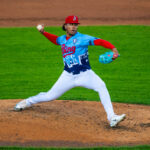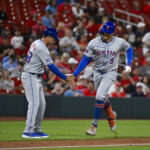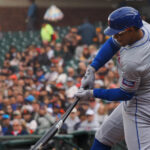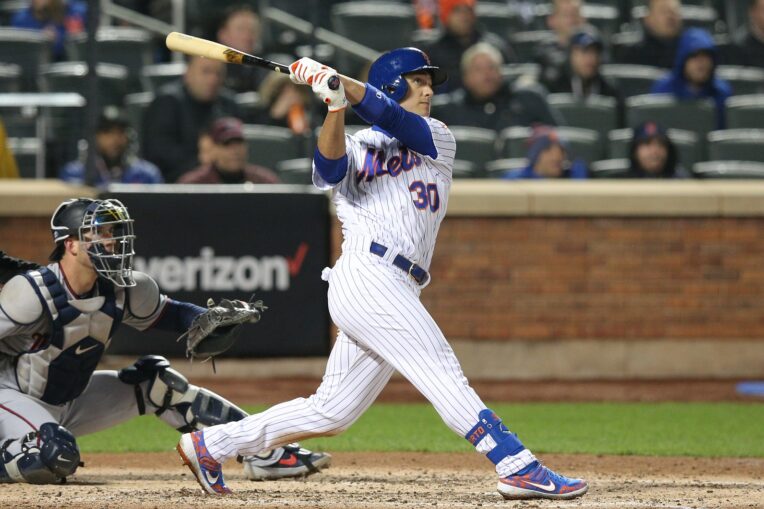
Michael Conforto was drafted tenth overall in the 2014 draft and quickly rocketed up the Mets’ minor-league system. Debuting in 2015, he notched a 130 OPS+ down the stretch, helping New York clinch a spot in the World Classic. In Game 4 of the World Series, he became the first rookie since Andruw Jones in 1996 to hit two home runs in a World Series game.
The following three seasons were productive for the Oregon State product, ranking first in the team in home runs and WAR. In his first five MLB campaigns, he’s been well above-average with the stick, cementing himself as the best homegrown hitter since David Wright. But there’s definitely room for improvement.
Put yourself in the shoes of the Mets’ hitting coach, Chili Davis. How can he make one of the Mets’ most productive hitters of the last decade even better?
His batted ball profile is fine, although it would be nice to see harder contact in 2020, or whenever baseball resumes. It’s not overly impressive, but there’s nothing that screams MASSIVE REGRESSION INCOMING. His xwOBA, xSLG, barrel percentage, and walk rate all ranked among the 20% of all major-leaguers in 2019.
However, when I looked into it, the answer is simple: pitch selection.
In order to examine Conforto’s pitch selection, I employed one of Baseball Savant’s many tools: Swing Take Profile. Using it, I was able to conclude that his issues lie in his ability, or rather lack thereof, to attack pitches on the edge of the strike zone.
To analyze previous players, I’ve used Baseball Savant’s Swing Take tool. Swing Take splits the plate into four Attack Zones: The Heart Zone, The Shadow Zone, The Chase Zone, and The Waste Zone. I’ve explained it a couple of times in previous pieces, but it’s worth going over again.
- The Heart Zone is the zone where the most hittable pitches wind up. It’s virtually right down the middle of the plate.
- Surrounding The Heart Zone is The Shadow Zone. The name behind it is pretty self-explanatory; it “shadows” the Heart Zone. The Shadow Zone is the main zone that we’ll be exploring today.
- Around The Shadow Zone is The Chase Zone. It’s the zone pitchers use to induce swings and misses.
- The final of the four zones is The Waste Zone. This is the least frequented zone of the four; pitchers only used it seven percent of the time in 2010, primarily to “waste” pitches.
Each zone is measured using a metric called Run Value. Baseball Prospectus lists its definition as “the number of runs to score from a particular event based on historical context”.
Since I’m planning to go in-depth with this tool, I’d recommend reading this piece to help familiarize yourself.
Here’s an image of Conforto’s Swing Take Profile.

Overall, his chart equates to a seasonal total of +21 Run Value. Breaking his Run Value down by zone, we can see that his production in the Heart Zone was worth +4 Runs, his Shadow Zone -21 Runs, his Chase Zone -23 Runs, and his Waste Zone +14 Runs.
However, his production in The Shadow Zone could use some work. The -21 Runs he posted in that Attack Zone was in the 14th percentile league-wide. That being said, it is worth noting that The Shadow Zone is a particularly difficult zone for batters; only 5% of qualified hitters finished 2019 with positive marks in there.
Is this an issue that’s will stay with Conforto for the rest of his career or is there a fix? I think the latter.
Chili Davis had his fair amount of detractors in his first year as the Mets hitting coach, but it’s worth noting that many members of Mets’ everyday lineup had offensive campaigns that exceeded preseason expectations. If Davis could help players like J.D. Davis, Pete Alonso, and Wilson Ramos, it’s certainly a promising sign that he can implement the correct changes to Conforto’s swing.
That brings up the original question: How can Conforto improve his production in The Shadow Zone going forward?
Let’s go back to his Swing/Take Profile. On the right side of the image, there’s a graph that shows the combined Run Values of each swing and take in the corresponding zone. In The Shadow Zone, his swings totaled a Run Value of -20 and his takes amounted to a Run Value of -1. This means that when he swung at pitches in The Shadow Zone, his production was worth -20 Runs and while he took a pitch, it was only worth -1 Run.
As you might infer from the last paragraph, this means that Conforto’s production took a tumble when he swung at pitches in The Shadow Zone. This inference is supported by the data available at Baseball Savant, which shows Conforto’s numbers in The Shadow Zone .
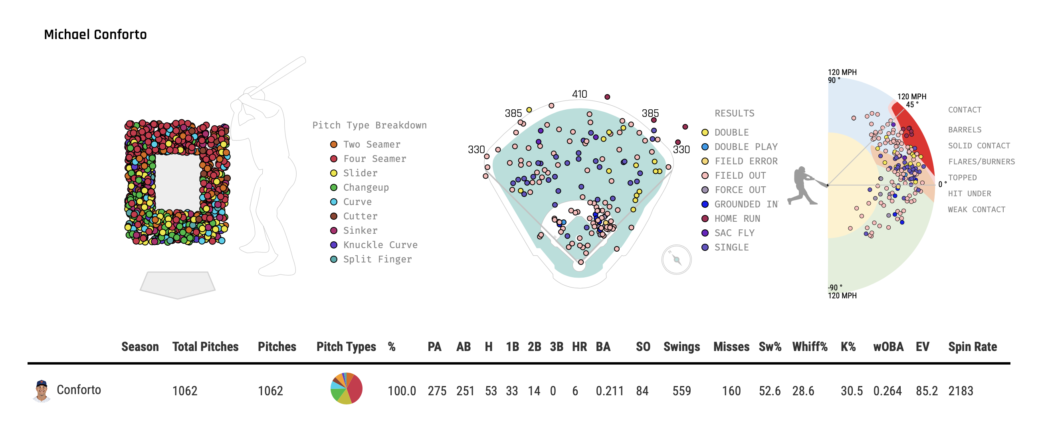
The Shadow Zone is a strange zone. Half of it is located in the strike zone and the other half is not. In a vacuum, you’d want to swing at 50% of pitches in The Shadow Zone. However, Conforto swung at 52.6% of the pitches in the Attack Zone, a mark that was five percent above the league-average. Which isn’t a great idea, especially when you consider his production there.
On 559 swings in The Shadow Zone, he produced a .264 wOBA, which was well below his season average of .358. It wasn’t just his wOBA that was substandard; his other metrics were pretty poor. His 85.2 exit velocity and 28.6 Whiff percentage both point to some underlying issues.
Let’s take a look at some video.
Here’s a game from September 2019 against Anthony DeSclafani and the Reds. DeSclanfani’s targeting The Shadow Zone and he executes perfectly. The result: a slow tapper, easily handled by Reds second baseman Derek Dietrich. There’s plenty more of that available on MLB.com’s video database.
Perhaps his swing isn’t conducive to pitches in that zone. This theory holds some substance. From 2015-2019, which are the years that Swing Take data is available, Conforto’s Shadow Zone Values has fallen in the negative ranges each season, with his -21 mark in 2019 representing a career-low.
There are a couple of ways to fix this issue. One is to completely revamp his swing to allow better production in the Shadow Zone. But that’s not recommended. Why ruin one of the sweetest swings in Mets history? Just ask another Mets left-handed hitter who was predicted to have a bright future; Swing changes aren’t always a good idea.
The other idea is a lot less radical and a lot simpler. It’s to stop swinging in The Shadow Zone. As mentioned before, Conforto swung at offerings in The Shadow Zone at an above-average rate. It feels dumb to say, but it’d certainly help him to swing at pitches he can actually hit and take those that he can’t.
Out of the 1,062 pitches he saw in The Shadow Zone in 2019, he whiffed on 28.6% of them. On pitches that were in The Shadow Zone, but were not strikes, he swung and missed on 33.4% of such offerings. That’s a remarkably high number, especially on pitches that are notably more difficult to barrel up. When he made contact with them, he didn’t do much, as exhibited by his .240/.214 wOBA/xwOBA combination.
On pitches that were strikes in The Shadow Zone, he performed much better: .279/.325 wOBA/xwOBA. While that looks good on the surface, note that his swings from the other three Attack Zones resulted in .388 wOBA/.389 xwOBA marks. Clearly, it’s better for Conforto to avoid swinging in The Shadow Zone at all costs.
Michael Conforto’s future rests on his ability to execute proper pitch selection at the plate. Sure, it might be tempting to swing at pitches that could fall in the strike zone. But it’s better, for both him and his teammates to take the pitch, instead of offering at it. Worst-case scenario, it’s a called strike. Best-case scenario, taking the pitch puts his team in a better position to win.
Chili Davis, if you’re reading this, please make Michael Conforto a superstar. It’s something we all deserve.
Previous installments in this series:
Statcast Breakdown: J.D. Davis
Statcast Breakdown: Jeff McNeil
Statcast Breakdown: Noah Syndergaard
Statcast Breakdown of Forgettable 2019 for Edwin Diaz
Statcast Breakdown: Marcus Stroman


